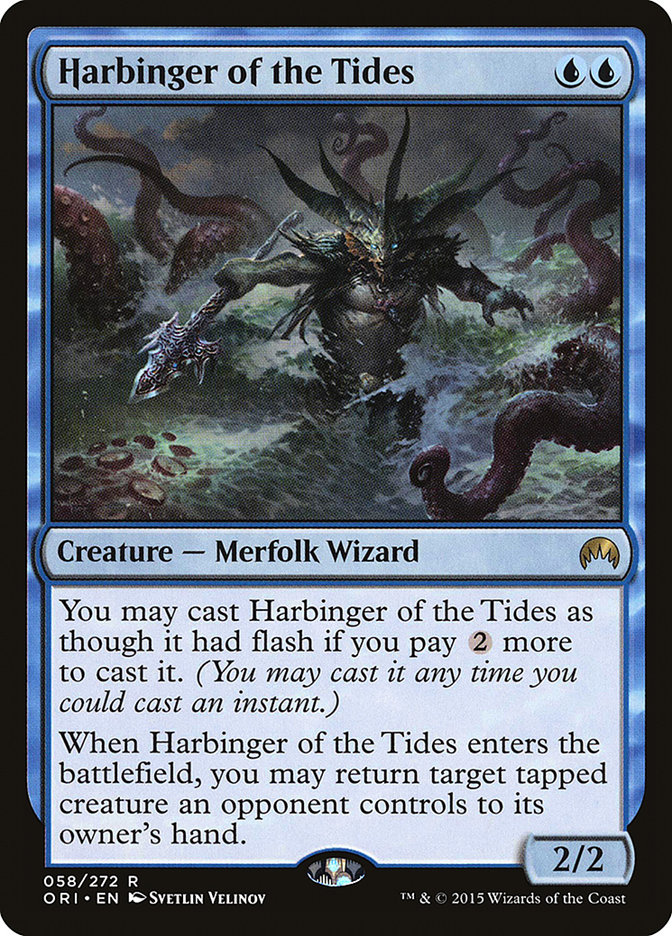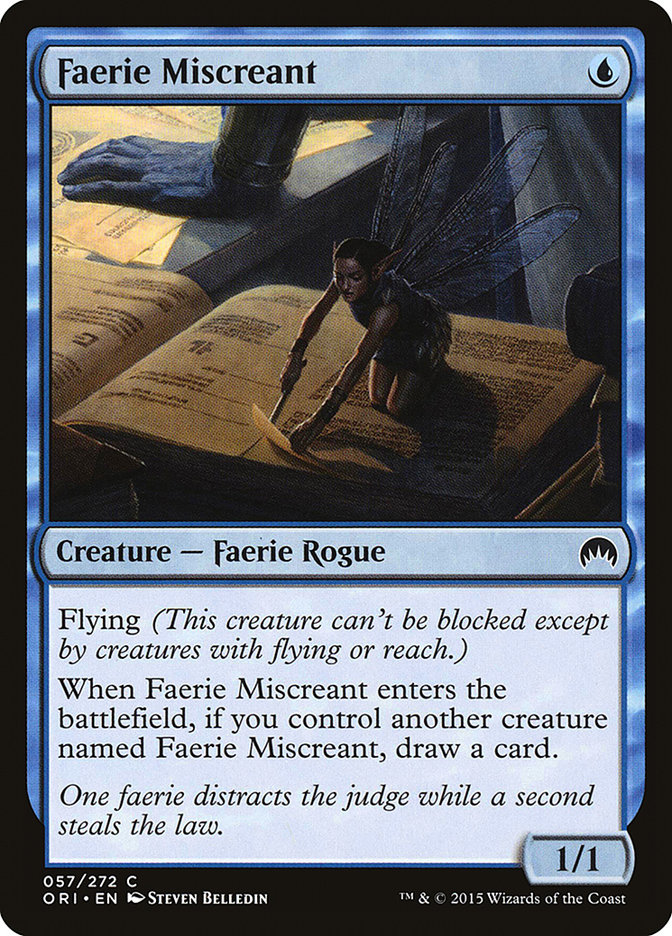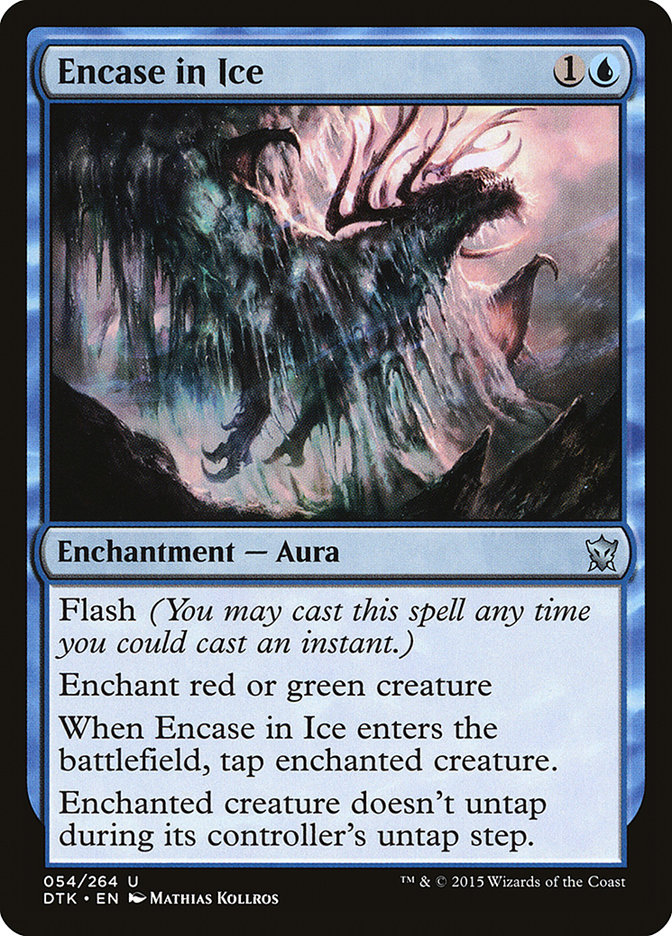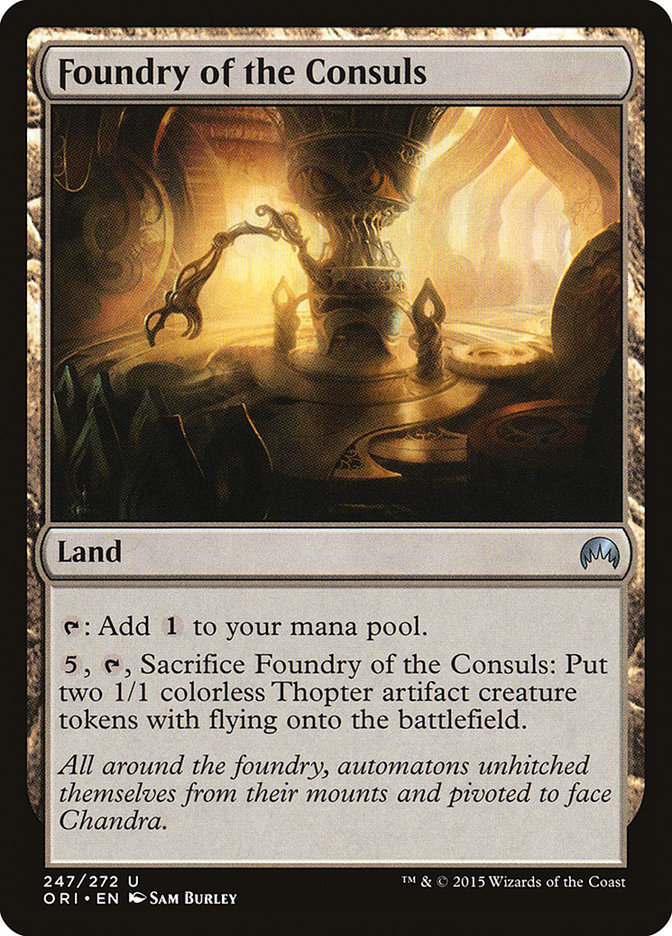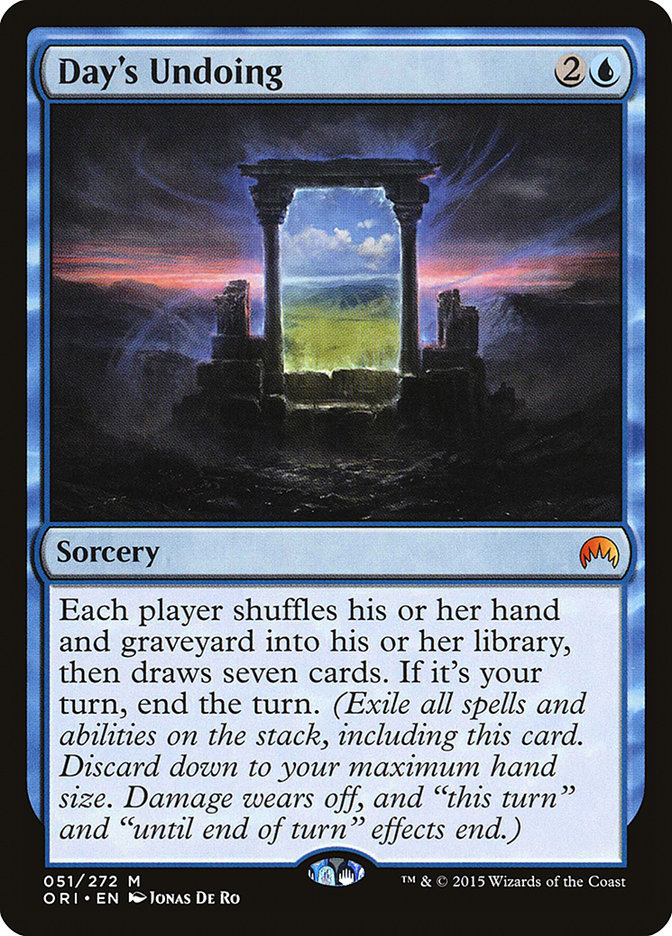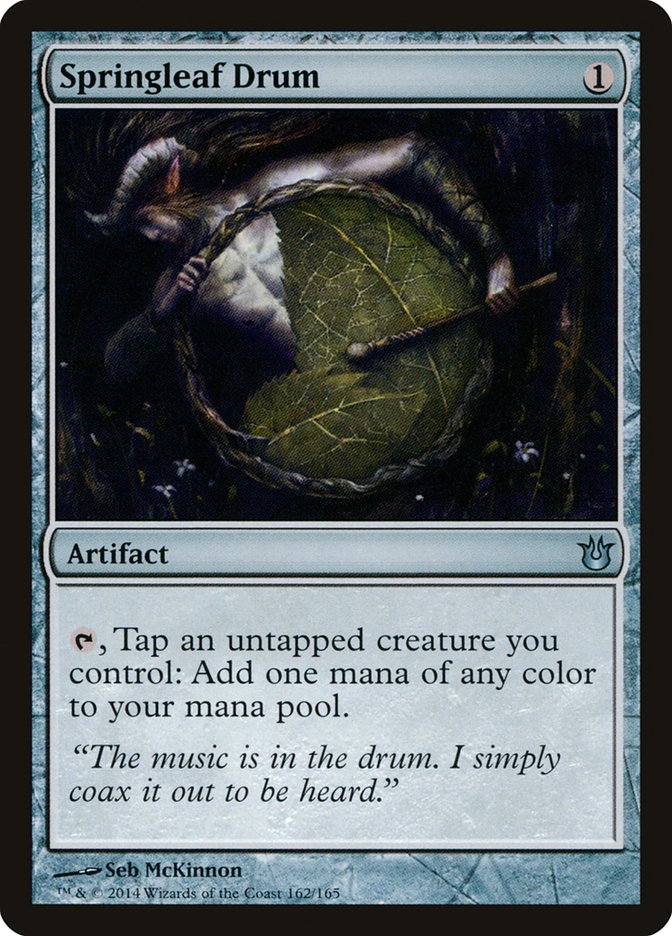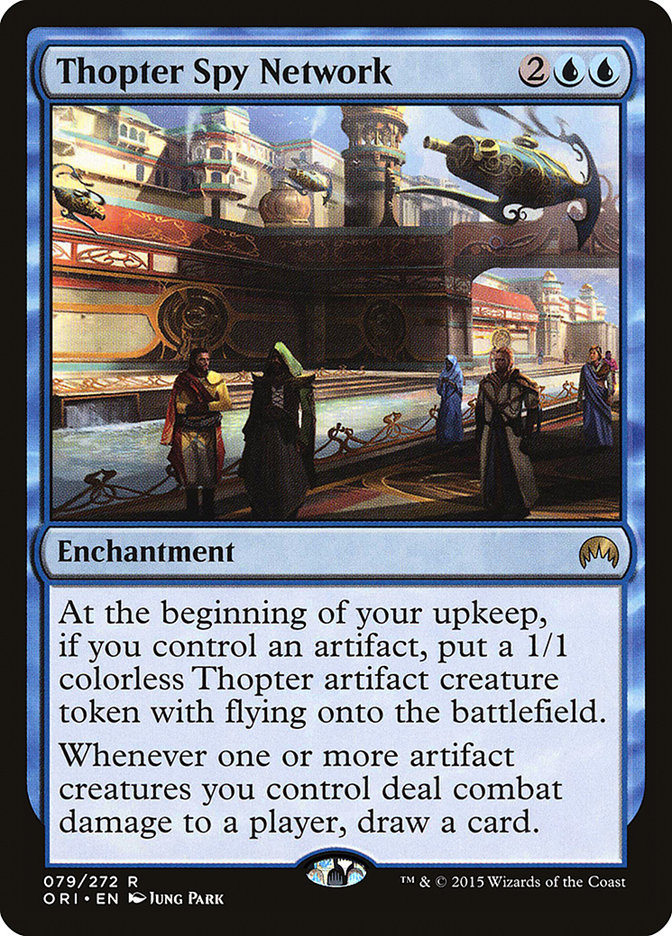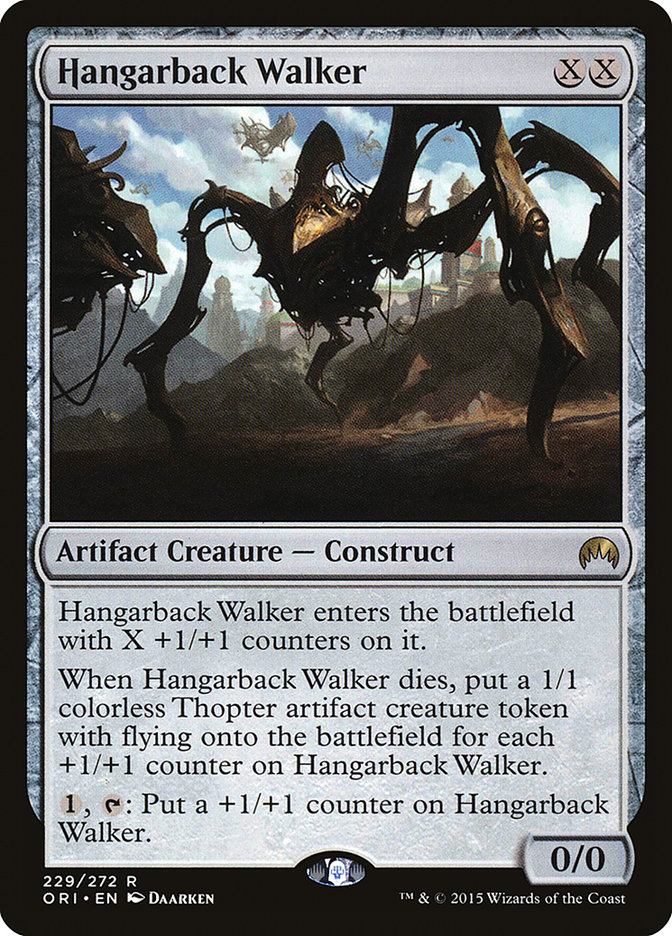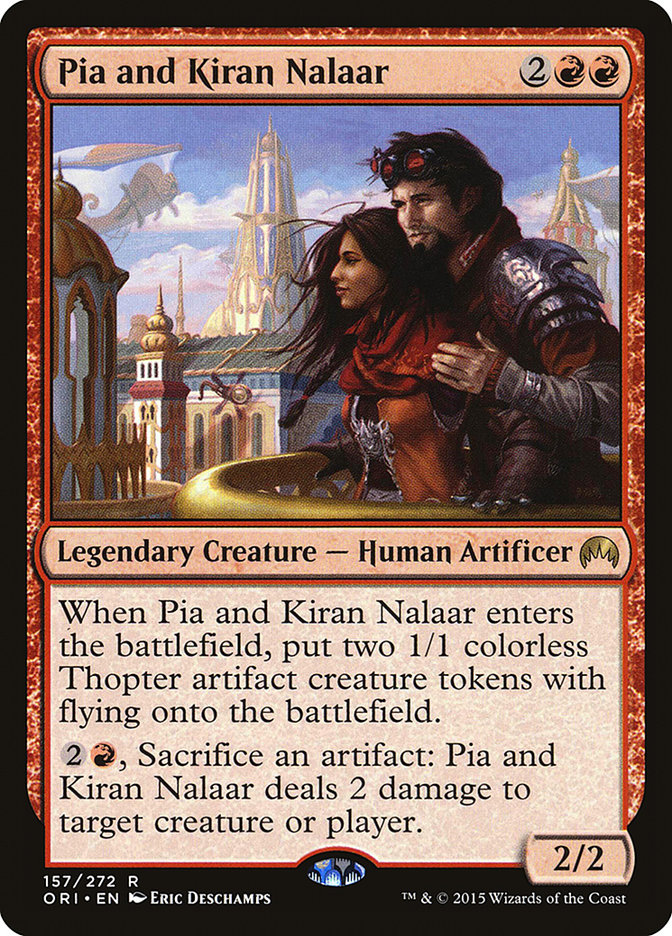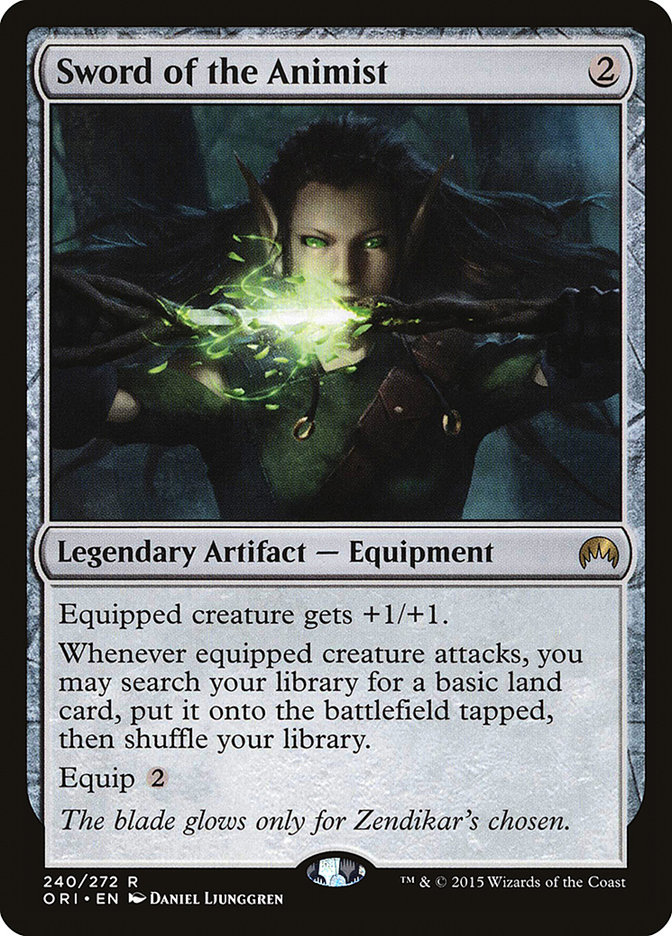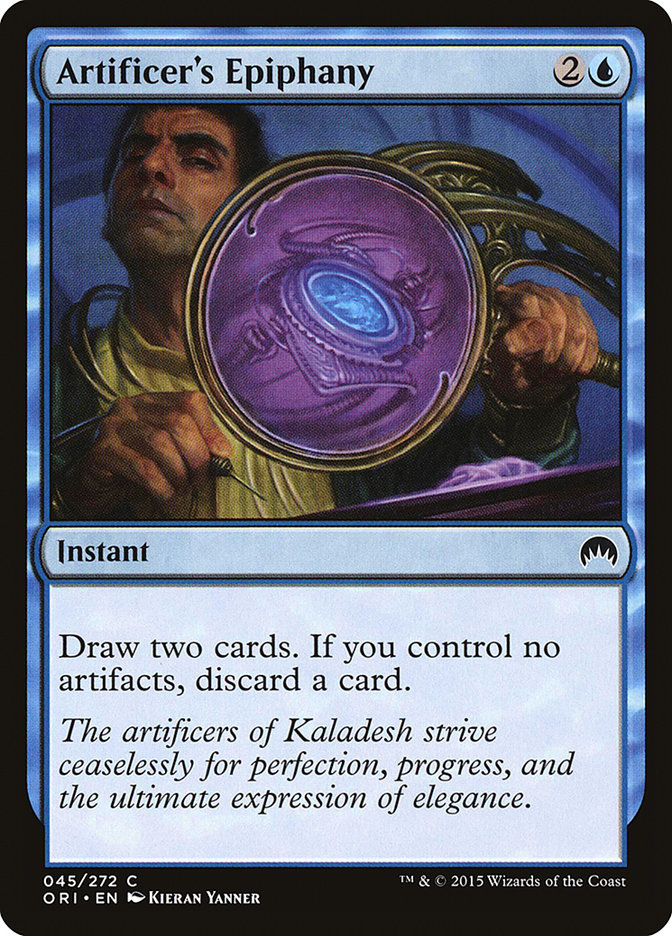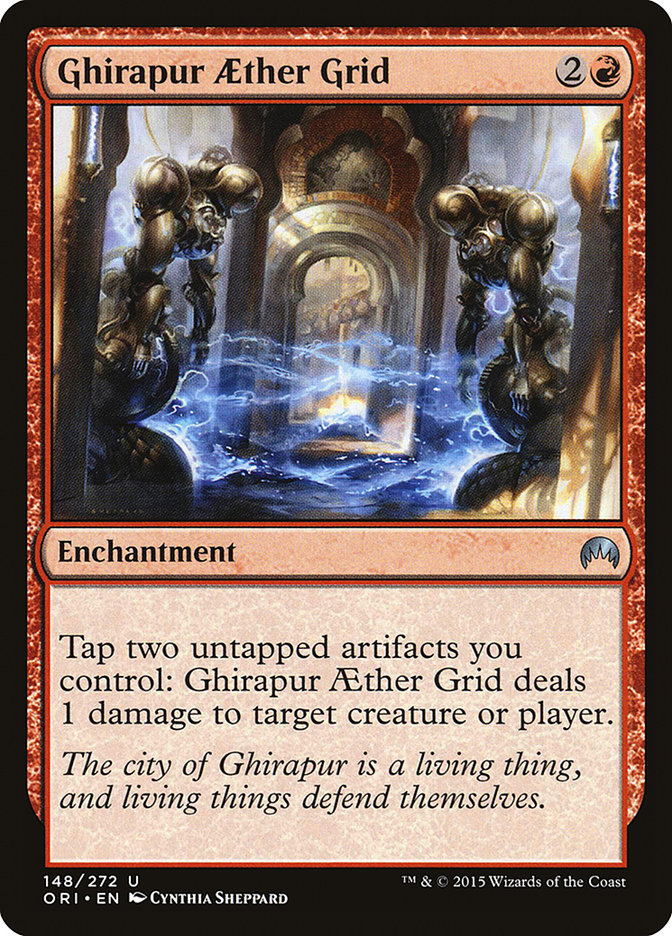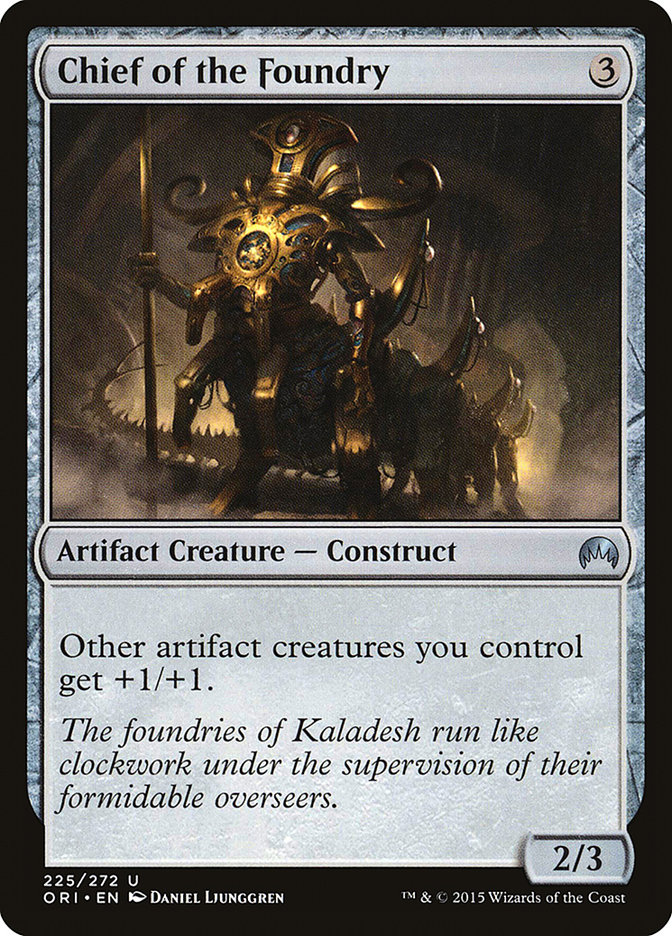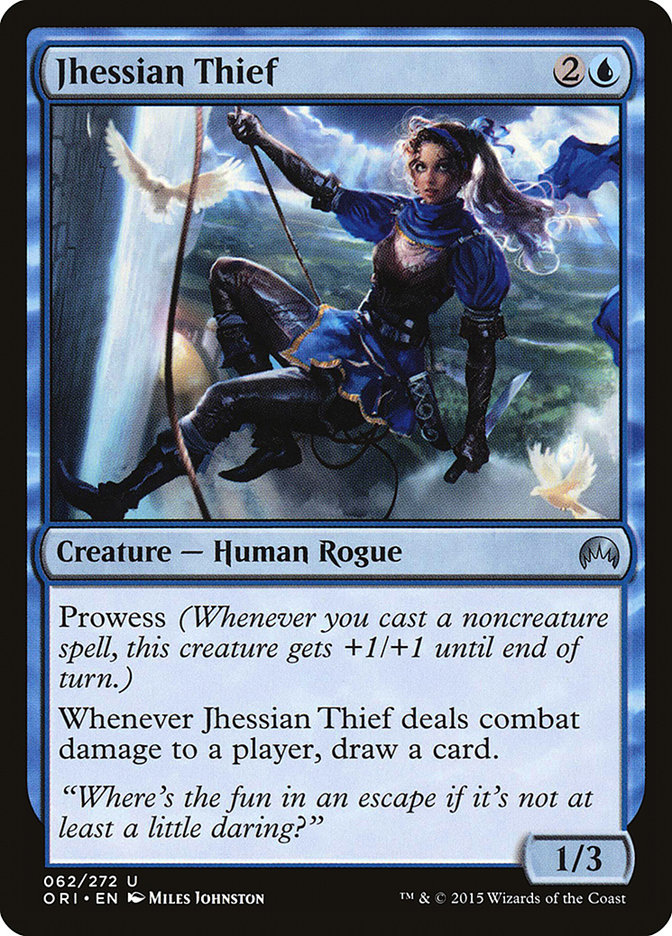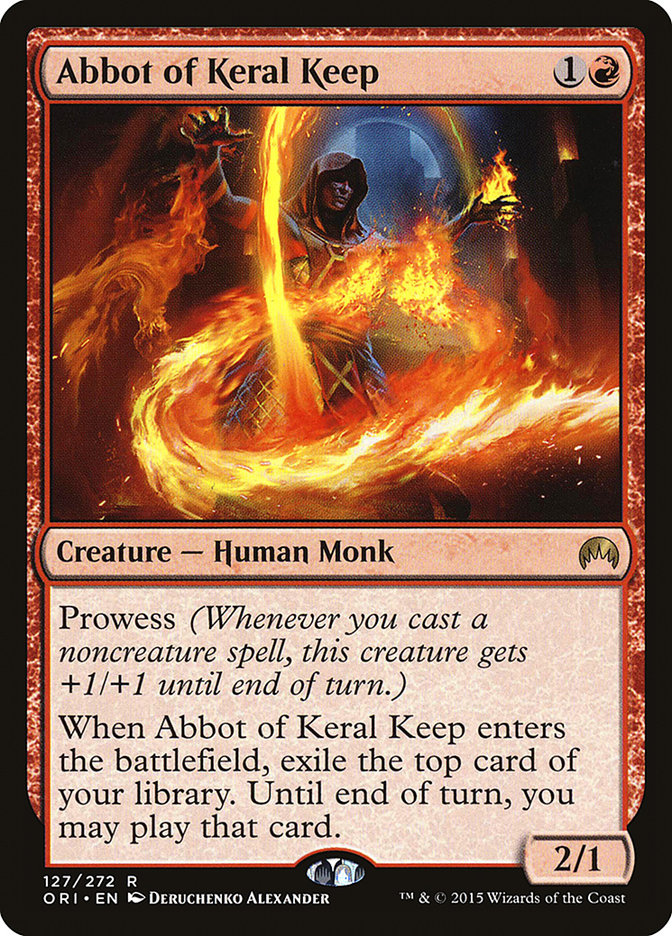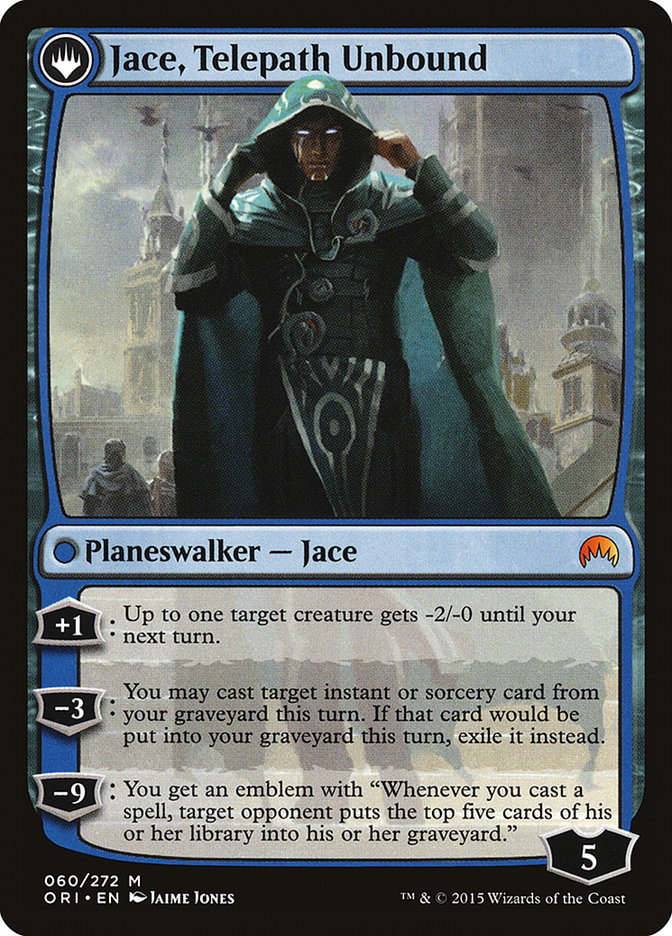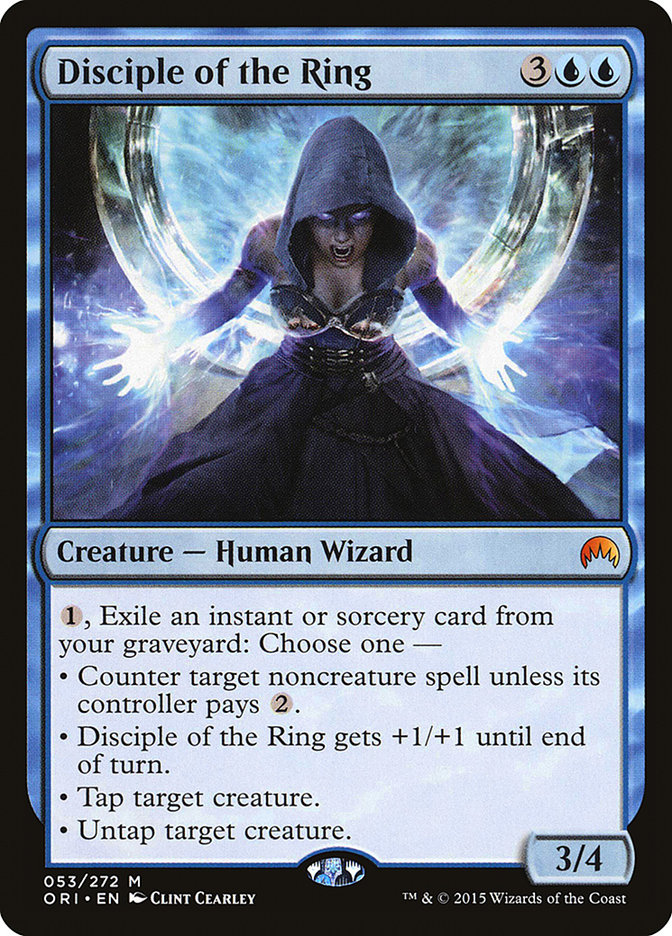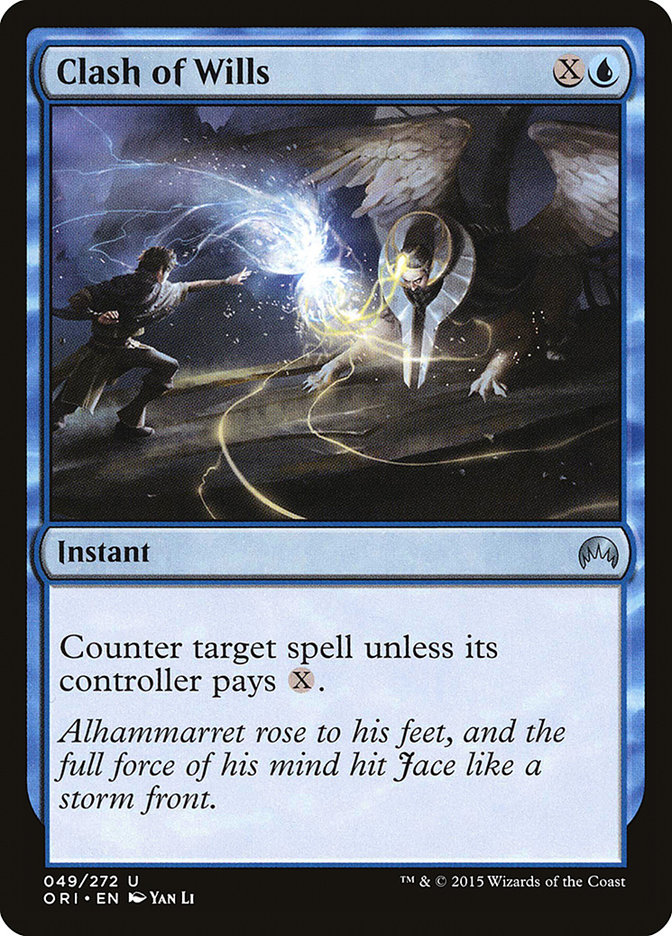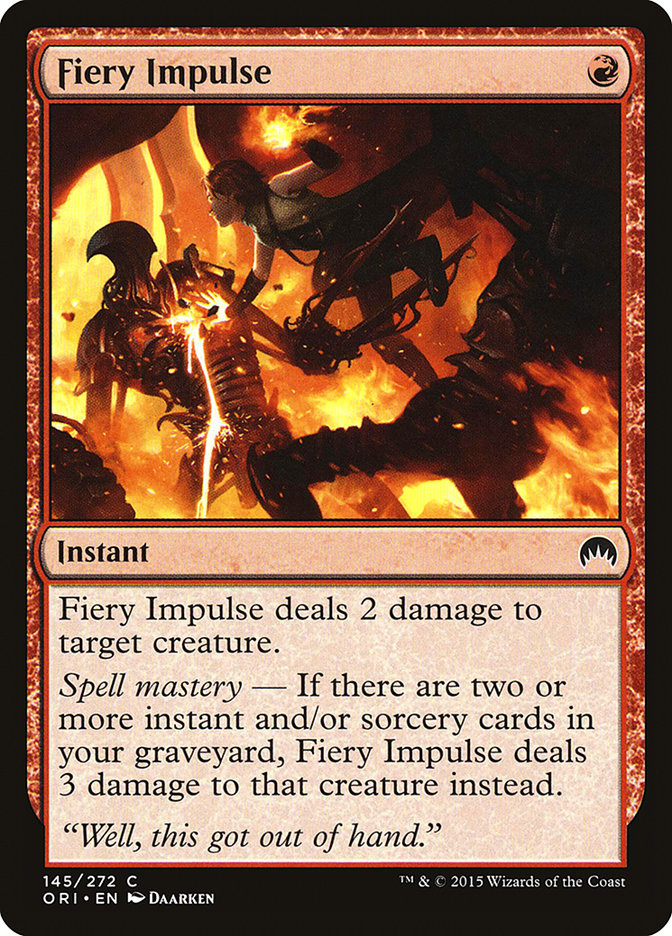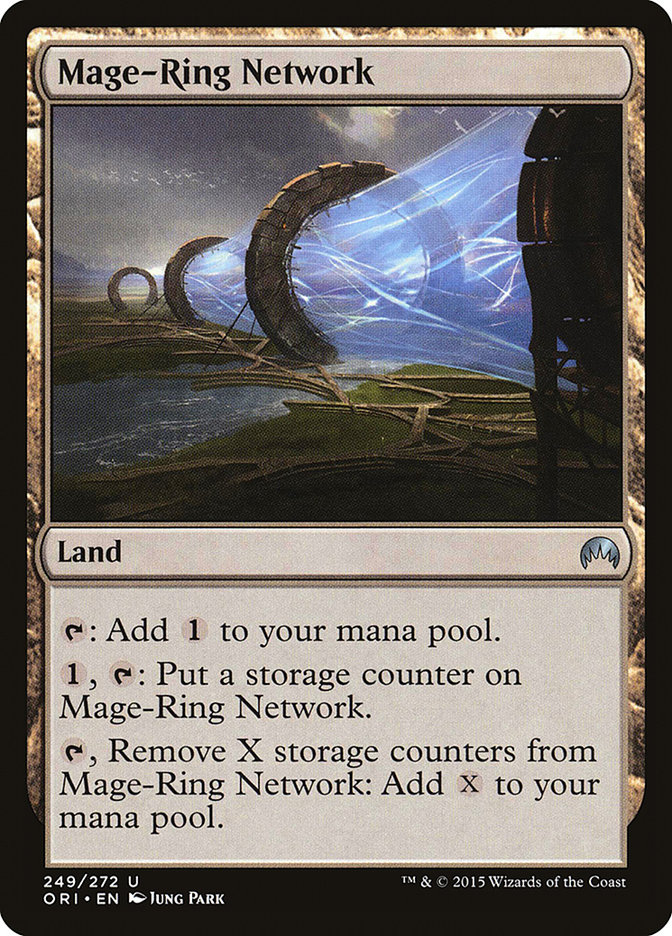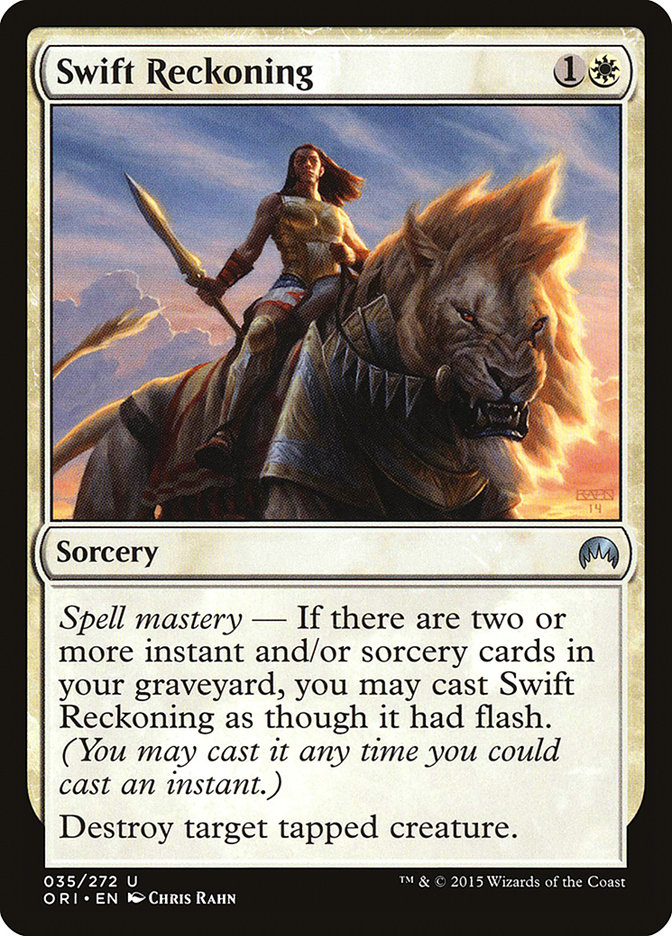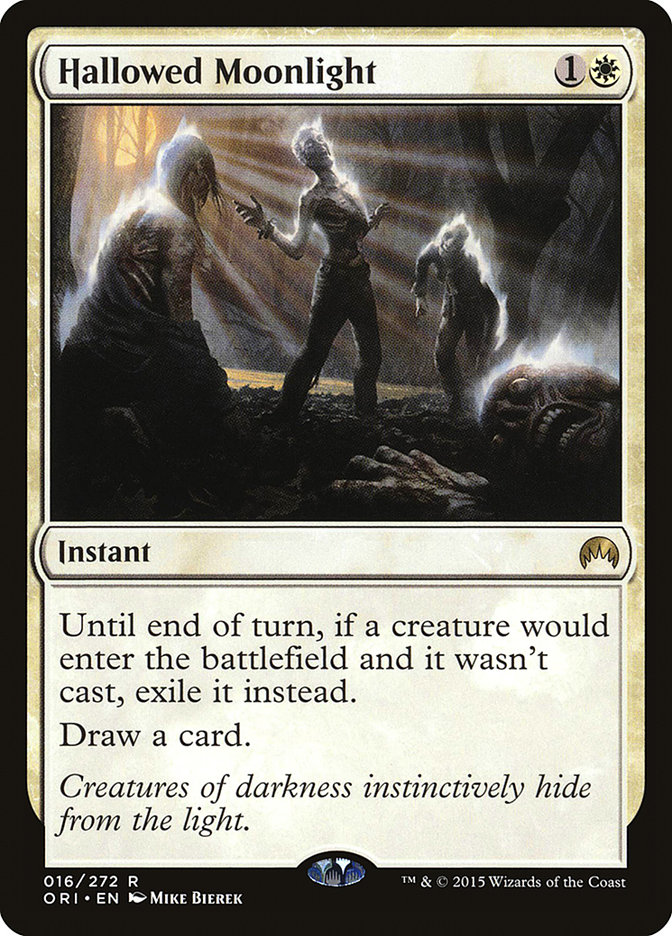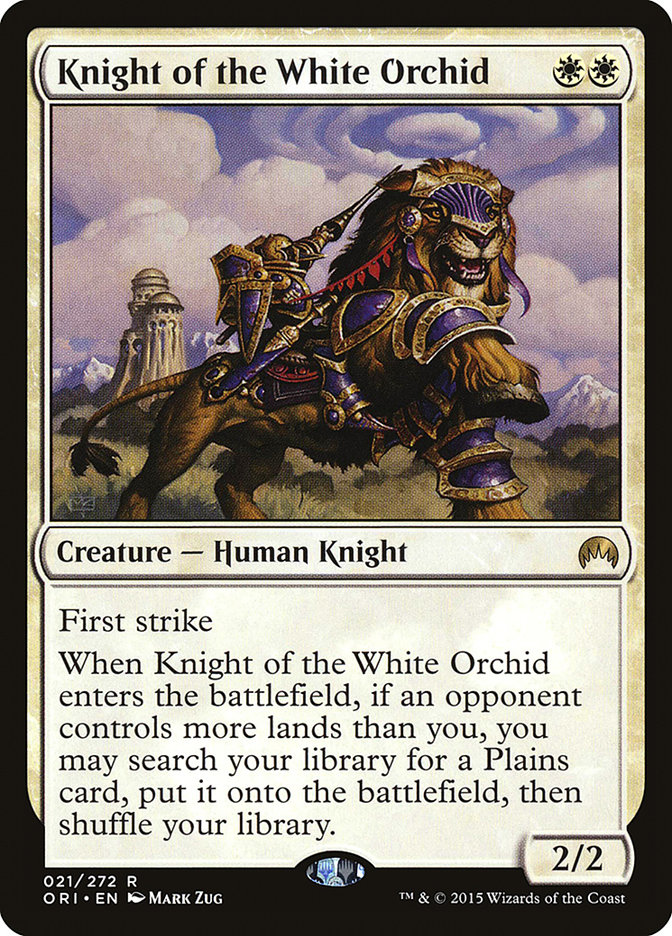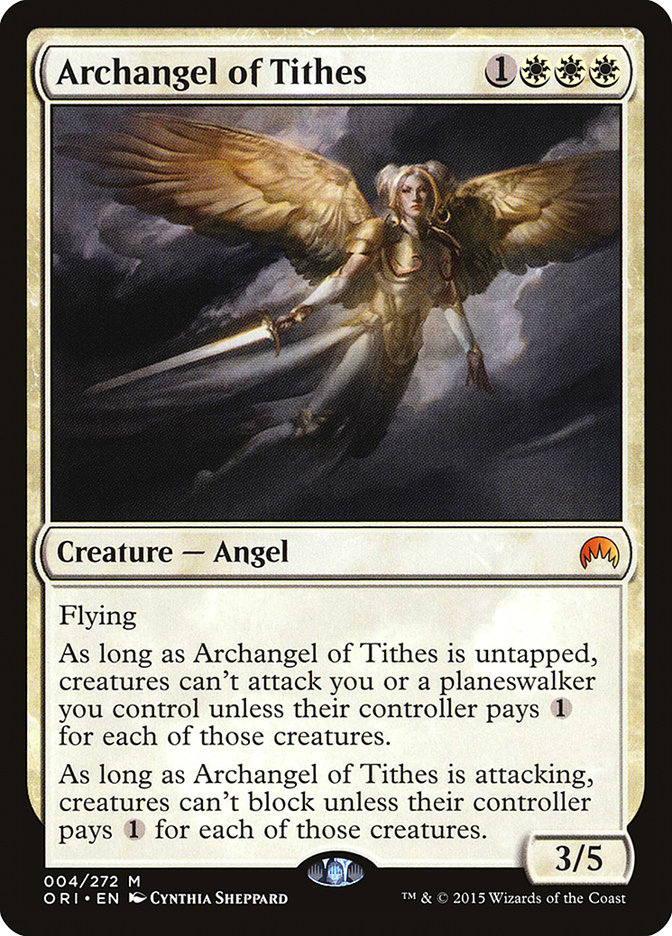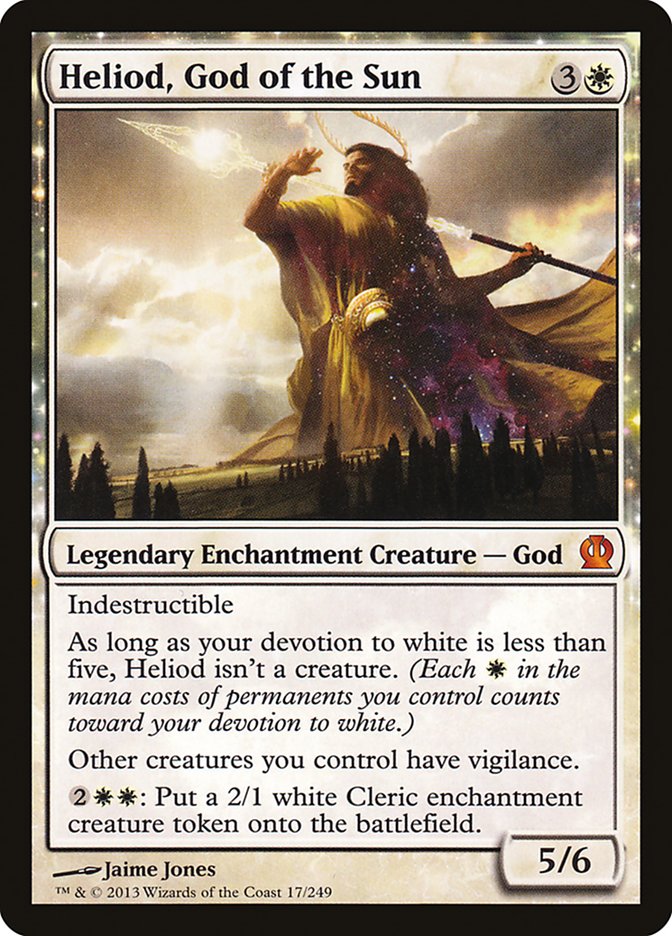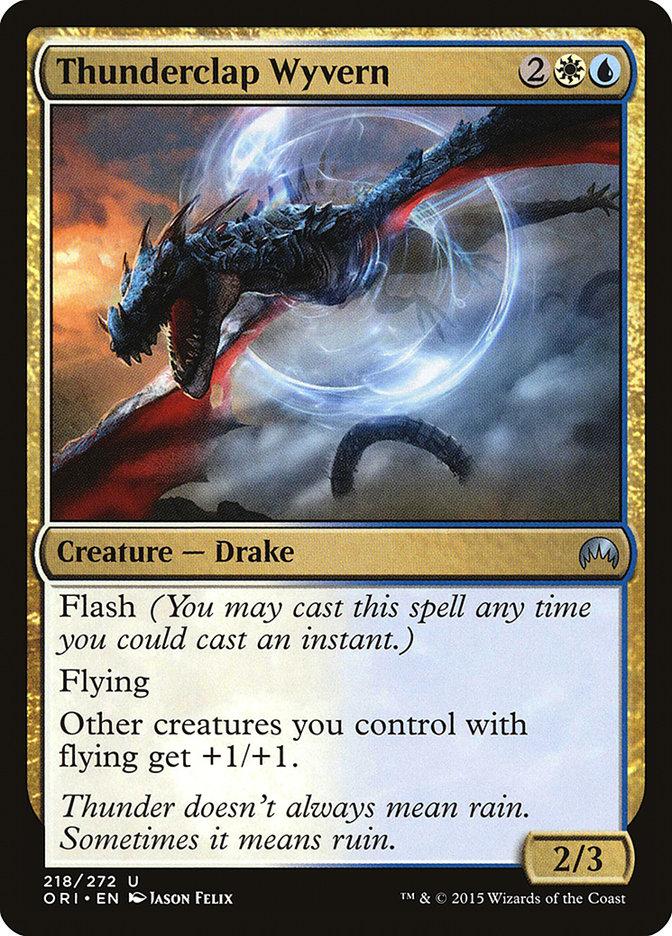I’m not sure what got into WotC, but Magic Origins is a fair bit stronger than Core Sets have been in a long time. I can’t remember the last time an eighth set in a Standard season offered this much strong cardboard to potentially shift the landscape. I assume some of it is an illusion, that some cards that won’t pan out. However, if half the cards with potential in this set hold up, the format is in for a major shake-up.
Today, I’d like to focus on blue decks, and what better place to start than Blue Devotion?
Finally! The two-drop we’ve been waiting for has finally arrived. Harbinger of the Tides is a legit two-drop, but it has a lot of flexibility later. Sometimes your opponent is beating you down and it’s just a two-mana Man-o’-War. As the game goes long, you eventually get to play the four-cost version of the Harbinger, letting you surprise opponents in combat.
The bounce is much appreciated. Creature removal was already this archetype’s weakness, now that it doesn’t have Domestication. It’s also just sweet to flash down more blue devotion and wake up Thassa inside of combat.
So, is this enough to make Blue Devotion a killer again instead of a fringe strategy? Last time, we had two different double blue two-drops, but Stratus Dancer is no slouch.
Creatures (28)
- 4 Thassa, God of the Sea
- 4 Master of Waves
- 4 Stratus Dancer
- 4 Gudul Lurker
- 4 Shorecrasher Elemental
- 4 Faerie Miscreant
- 4 Harbinger of the Tides
Lands (25)
Spells (7)
Sideboard

We might not have nice things like Cloudfin Raptor, but Faerie Miscreant is a pretty solid upgrade over Hypnotic Siren or Triton Shorestalker.
Obviously we’re not drawing a card off Faerie Miscreant every time. However, once we’re already in the market to play 1/1 fliers for one, even drawing an extra card once in a while is a pretty exciting upside.
Yes, it is a “color-hoser,” but it does hit most people. Depending on which way the format breaks, we could just as easily end up with two as zero.
While Blue Devotion was missing a good blue two-drop, and arguably a good one-drop, Mutavault was definitely the true missing link in the archetype (at least as originally conceived).
Foundry of the Consuls isn’t even in the same zip code as Mutavault, but it is something. It’s basically a Stalking Stones that gives you two 1/1 fliers instead of a 3/3 (which is kind of sweet with Bident of Thassa). It’s a nice way to get a little extra out of your lands, to help make up for not getting to use Temples.
Of course, it’s not clear Gudul Lurker is even enough of a reason to give up Temples…
Creatures (30)
- 4 Thassa, God of the Sea
- 4 Master of Waves
- 4 Kiora's Follower
- 4 Stratus Dancer
- 4 Shorecrasher Elemental
- 2 Silumgar Sorcerer
- 4 Faerie Miscreant
- 4 Harbinger of the Tides
Lands (24)
Spells (6)
Sideboard

Collected Company is a powerful Magic card in its own right, and happens to combo great with both Harbinger of the Tides and Faerie Miscreant. It’s also another way to get Devotion at instant speed.
Kiora’s Followers ramping us straight into four is well-utilized in this list, with ten four drops as well as Shorecrasher Elemental (leaving a blue open to protect it).
Deathmist Raptor is a great way to fight strategies that try to keep us off Devotion by overloading on removal. We’ve already got Stratus Dancer and Shorecrasher Elemental, so we’re going to be in pretty good shape for getting Raptors back.
The biggest question with green that I see is whether we can really get away with playing almost no non-creature spells. That said, Devotion isn’t even the only way to build Mono-Blue…
Creatures (24)
- 4 Ornithopter
- 3 Triton Shorestalker
- 1 Stratus Dancer
- 4 Gudul Lurker
- 4 Sidisi's Faithful
- 4 Faerie Miscreant
- 4 Harbinger of the Tides
Lands (19)
Spells (17)
Sideboard

This list is built to exploit Day’s Undoing with lots of cheap bounce and an extremely low curve.
I know, I know, I know. There have been a lot of Timetwisters over the years, and a lot of people have gotten really excited about them, usually ending is disappointment.
This time it’s different!
Day’s Undoing is the best Timetwister since Urza Block!
Wait, wait, wait. Are you sure Timetwister, itself, is even a good card?
Yes, Timetwister is a good card, better than should see print. Day’s Undoing does have a drawback, and that does matter, but the main cost of this drawback is stifling one’s ability to “combo off.” If you just use Timetwister fairly, the drawback doesn’t even matter much.
Timetwister isn’t as good in fair decks as unfair ones.
True, which is why this card is actually printable. I don’t think Day’s Undoing is actually busted or anything, but I think it’s actually going to see play (often out of sideboards, such as the Blue Devotion deck above).
If you’re on the play and played a card on turns one and two, if you’re opponent hasn’t cast a spell yet by their second turn your Days Undoing is effectively a draw three. Even better, it completely randomizes their hand (which will generally make it slightly worse, in this position).
That’s certainly not the best it gets, however. Harbinger of the Tides means more bounce for blue decks anyway, and each bounce spell is effectively removal when they have to shuffle their hand away.
Springleaf Drum is excellent acceleration for a Day’s Undoing deck (though they could also use green acceleration or none at all). A turn-one Springleaf Drum + Ornithopter + one-drop into turn-two Day’s Undoing is a fantastic start to a game. Once you are Day’s Undoing people who only have one land on the battlefield, we are starting to talk about a very real chance that they don’t have any land because they can’t mulligan like they could when they first kept that hand. Besides, Springleaf Drum plays right into the Ornithopter/Darksteel Citadel/Ensoul Artifact strategy.
An alternative route to go with Ensoul Artifact is trying to play up the Thopter theme in Magic Origins.
Creatures (11)
Lands (25)
Spells (24)
- 2 Dissolve
- 4 Stoke the Flames
- 4 Ensoul Artifact
- 2 Disdainful Stroke
- 3 Dig Through Time
- 2 Wild Slash
- 2 Roast
- 4 Thopter Spy Network
- 1 Sword of the Animist
Sideboard

The biggest draw for a Thopter-based strategy, to me, is Thopter Spy Network.
Thopter Spy Network asks a little of us in deckbuilding, but we don’t actually have to play as many artifacts (and artifact makers) as this list features. It is really important to get the Network up and running, though.
Once we do, we’re drawing an extra card a turn in the form of a zero-mana 1/1 flier. Plus, once we start hitting people with it, we’re drawing another card each turn from the trigger. That’s a huge advantage for zero mana a turn, with a lot of opportunity to snowball temporary advantages early.
This is just a fine card, giving us half the body up front and half later, except that each turn we are effectively getting +2/+2 worth of stats (although not until much later). It’s important to be careful about walking into Abzan Charm, but a growing Hangarback Walker can be a real nightmare for opponents without sweepers. While we’ll often play it as a two-mana 1/1, we’re also going to get some extra value later in the game, jump-starting it as a 2/2 or a 3/3 (for four or six mana).
I like Thopter Engineer better than the other three-cost options because of how often haste will function like an enters-the-battlefield trigger here. Playing a Thopter Engineer after a Thopter Spy Network is an obvious one, but even just giving Hangarback Walker an extra tap is a great bonus.
Four Thopter Spy Networks isn’t enough, and I’d generally rather have Pia and Kiran over Whirler Rogue (assuming we have red mana). It’s nice that Pia and Kiran are legitimate threats, making it harder for opponents to justify using their removal on your Thopters.
I’ve seen very mixed sentiments about this card, but I actually kind of think it’s boringly solid but not great (at least until this fall). Don’t get me wrong, it’s a totally playable card, I just don’t think it’s exciting the way stuff like Swords have been.
This is certainly no Thirst for Knowledge. While it’s tempting to play it in a control deck that wants to leave up counters but uses Darksteel Citadel and such to power Thopter Spy Network, it just seems so bad when you want to fix your mana on turn three and don’t yet have an artifact. It’s probably fine, in the right spot, but I’m more excited to see where it goes this fall – or perhaps nine months from now, because doesn’t it seem like that’s exactly when they’d drop an artifact block?
This is totally on the table if you are willing to really commit and play stuff like Alchemist’s Vial. I wouldn’t recommend it for anyone only half-way in.
I can definitely see playing Chief of the Foundry in a Thopter deck, as we really are a token deck in a weird sort of way. If we go that route, we’d like to play four – not only to stack them, but to help power through removal. I’m not sure this is enough reason to play a bunch of creatures like Phyrexian Revoker or Bonded Construct, but I guess it’s worth keeping in mind.
Another approach we could take to U/R Aggro control is to try to take advantage of Prowess, direct damage, and lots of cheap card draw.
Creatures (17)
- 4 Prophetic Flamespeaker
- 4 Monastery Swiftspear
- 4 Jhessian Thief
- 1 Jace, Vryn's Prodigy
- 4 Abbot of Keral Keep
Planeswalkers (1)
Lands (23)
Spells (19)
Sideboard

This list has a shocking amount of card draw for such a red-heavy list. It’s particularly well suited to opponents with aspirations of blocking thanks to having a lot of ability to clear the path for its “Ophidians,” that draw a card or two each time they attack.
Jhessian Thief isn’t absurdly powerful or anything, but it is a fair bit better than Scroll Thief or Shadowmage Infiltrator. Being easy to cast and hard to block, Jhessian Thief combines well with burn both to clear the way, and to do extra damage to opponents when you are bashing them (Stoke the Flames effectively does five if you cast it before attacking).
Abbot of Keral Keep is one of my favorite cards in the set. It has more than a passing resemblance to Snapcaster Mage, but it’s more than just a two-for-one (most of the time). It’s also a legit threat on its own, frequently hitting for three or more despite being a two-drop.
If we have no other plays for turn two, we’ll often play it then; however, the later we can play it, the better. As long as we play it turn three or four, though, we have good chances of drawing a card since we can play it before playing a land for the turn. We can also flip Wild Slash, Monastery Swiftspear, sometimes even Stoke the Flames. Besides, if we are specifically looking for land, each card we flip that isn’t land is one turn closer we are to actually finding land (giving us a sort of scry 1).
Eh, I just haven’t been excited by this card, yet. It’s a mythic rare Merfolk Looter that doesn’t deal damage. To make matters worse, it might be a drawback to transform into his planeswalker version. It’s not just that it can get killed from damage. You can’t loot anymore!
The ability to shrink an opposing creature’s power isn’t super what we’re looking for, but at least it can hit zero creatures. The flashback ability is much better, and if the card is playable, this is why. Getting to flashback a burn spell or Dig Through Time is sweet if you aren’t under too much pressure (so that Jace actually lives). At least there we get a “two-for-one,” since we’ll have the flashbacked spell and the planeswalker sitting in play, aspiring to give us more value later.
We should try the card, and the flip walkers are unusual enough that my usual confidence that I actually know how good they are is lower, and so I’ve included one here and want to keep an eye out for other spots we might be able to try one.
Here’s another direction we could go with U/R:
Creatures (3)
Planeswalkers (2)
Lands (26)
Spells (29)

The big new addition here is Disciple of the Ring, giving us another way to take over a game with a threat that’s hard to remove.
Disciple of the Ring is a really cool Morphling variant that plays very differently depending on the opponent. Against a control deck, you might have a way to cast it with a Mage-Ring Network, ensuring you have tons of mana to protect it – but you also might just cast it for eight when they have six tapped mana, knowing you could stop a Hero’s Downfall.
Once you untap with the Disciple, you are usually going to be able to lock out non-creature spells quite well. However, you also get to dominate the board, tapping creatures at will. As if that wasn’t enough, Disciple effectively has vigilance and pumps both ways at the same time!
You do need a lot of sorceries and instants to power the Disciple, and Dig Through Time has some tension with it, but I think this card is one of the more underrated ones in the set and sure to become a popular control option for the next eighteen months (though certainly not universally adopted, as there are some good Walkers and Dragons).
A passable counterspell for helping round out our curve. It’s not exciting or all that powerful, but it’s the right type of effect.
A control deck with a lot of sorceries and instants is typically going to prefer this to Wild Slash, though the question of Magma Spray still looms.
Weaker than the old Time Spiral storage lands in two ways, Mage-Ring Network doesn’t make colored mana, and you have to put your shields down every time you use it since tapping it is required to pull counters off. Nevertheless, it’s still a potent way to gain an advantage against other slow decks. The tough part is the tension with Haven of the Spirit Dragon and Radiant Fountain. How much colorless mana can we actually play?
Here’s another way to go with Disciple of the Ring:
Creatures (2)
Planeswalkers (3)
Lands (26)
Spells (29)

While Languish does offer us another cheaper option for sweeping, I am still a bigger fan of Crux of Fate in this list. Languish is nice in a deck with lots of five-toughness creatures, whereas Crux gives us extra insurance against big Dragons and opposing Rhinos.
Disciple of the Ring isn’t really as good a fit for U/W since Dragonlord Ojutai is probably better, and we have Elspeth. Here’s a look at U/W:
Creatures (2)
Planeswalkers (4)
Lands (27)
Spells (27)

They are quiet additions, but Clash of Wills, Swift Reckoning, and Celestial Flare are exactly the types of cards U/W was looking for: cheap interaction.
The exact mix of removal is definitely a function of the format we expect to face, but I went with Reckoning over Flare maindeck to bias against Goblin Rabblemaster – a card that usually punishes U/W Control, and which I expect to be very popular in Week One.
Celestial Flare is still an important addition, giving us a clean out to Stormbreath Dragon which we really needed.
How good this card proves maindeck is largely going to be a function of how much token-making people play. It’s also decent against Deathmist Raptor, reanimation, and blinking (such as Shorecrasher Elemental)
I think I’d rather have Dissipate if I was in the market for another three-mana counterspell, but if double blue is a problem this one is not embarrassing.
While we can stick to straight-up U/W Control, there is a lot of incentive to play a more creature-heavy W/U deck now.
Creatures (19)
- 4 Knight of the White Orchid
- 3 Brimaz, King of Oreskos
- 3 Stratus Dancer
- 2 Hidden Dragonslayer
- 3 Dragonlord Ojutai
- 4 Archangel of Tithes
Planeswalkers (3)
Lands (25)
Spells (13)

We could go even further and embrace full-on Devotion (mostly to power Nykthos, and by extension Mastery of the Unseen, maybe Soul of Theros); however, I wanted to see what a more normal midrange build might look like.
A quality card that is fine play on turn two against aggro to defend but which can also be a valuable source of card advantage. It’s particularly good at ramping us into five- and six-mana spells like Dragonlord Ojutai and Elspeth. Of course, it’s also just sweet when we’re on the draw, we can play the Knight on turn three and end up with two mana to hold up Disdainful Stroke and Valorous Stance.
This card is great! A 3/5 flier for four is already close, and it a good distribution of stats in this world of Stoke the Flames, Roast, and Elspeth, and this ability is just awesome. It makes it hard for opponents to hit you with haste creatures or tokens, but it also makes it hard for opponents to stop you from getting Brimaz through.
Is it time?
Dragonlord Ojutai would love for it to be time, and it does give us something to do with our Nykthos…
Our last U/W deck of the day takes us almost full circle (three-color blue decks will end up getting covered later this week, as I’ll be back Wednesday and Friday).
Creatures (25)
- 4 Stratus Dancer
- 3 Dragonlord Ojutai
- 3 Silumgar Sorcerer
- 3 Icefall Regent
- 4 Faerie Miscreant
- 4 Archangel of Tithes
- 4 Thunderclap Wyvern
Lands (26)
Spells (10)

I am skeptical, but Thunderclap Wyvern has some real appeal to it.
I would guess it’s better in a Thopter deck, but there are a lot of good fliers even if we’re just playing it straight-up. I doubt it’s enough to make us want to play Spirit Bonds, but it’s worth a shot. We’ve got a lot of creatures we’d love to protect, anyway.
Alright, I’m out for today, but I’ll be back Wednesday. Keep the suggestions, questions, comments, and requests coming. There is still so much brewing to do!

